Implement the additional 5 methods as indicated in the Linke
Implement the additional 5 methods as indicated in the LinkedList file. Test them thoroughly for all exceptional situations and boundary cases. The methods are contains(), get(), remove(), reverseList(), and set().
public class LinkedList<E>
{
Node<E> head;
Node<E> tail;
int size;
public LinkedList()
{
head=null;
tail=head;
size=0;
}
public boolean isEmpty() {
return (size==0);
}
public void addFirst(E val) {
Node<E> first = new Node<E>();
first.setValue(val);
if (isEmpty() ){
head=first;
tail=first;
}
else {
first.setNext(head);
head.setPrev(first);
head=first;
}
size++;
}
public void printList() {
Node<E> temp;
if (isEmpty()) {
System.out.println(\"list is empty\");
}
else {
temp= head;
while (temp!=null) {
System.out.println(temp.getValue());
temp=temp.getNext();
} ;
}
}
public void addLast (E val) {
Node<E> last = new Node<E>();
last.setValue(val);
if (isEmpty()) {
head=last;
tail=last;
}
else {
tail.setNext(last);
last.setPrev(tail);
tail=last;
}
size ++;
}
// handle error situations
// index value has to be >=0 and <=size
// size()=0 you do special stuff
public void add(int index, E val) {
if ((index>=0)||(index<=size)) {
if (index==0) addFirst(val);
else if (index==size) addLast(val);
else {
int j =0;
Node<E> temp= head;
while (j!=index) {
//System.out.println(temp.getValue());
temp=temp.getNext();
j++;
}
Node<E> newNode = new Node<E>();
newNode.setNext(temp);
newNode.setPrev(temp.getPrev());
(temp.getPrev()).setNext(newNode);
// (newNode.getPrev()).setNext(newNode);
temp.setPrev(newNode);
newNode.setValue(val);
size++;
}
}
else
System.out.println (\"index out of bounds ...\");
}
// handle empty list
public E removeFirst() {
E val;
if (isEmpty()) {
System.out.println(\"List empty - nothing to remove\");
return null;
}
else {
val=head.getValue();
if (size==1) {
head=null;
tail=null;
}
else {
head=head.getNext();
head.setPrev(null);
}
size--;
return val;
}
}
//handle empty list
public E removeLast() {
E val=null;
if ((isEmpty())||(size==1)) val=removeFirst();
else {
val =tail.getValue();
tail=tail.getPrev();
tail.setNext(null);
size--;
}
return val;
}
// returns true if the linkedlist contains the item val
// returns false otherwise
//for testing equality of objects use the equals() method.
// Assume toString() method exists for val and for items
// stored in the linked list.
public boolean contains(Object val) {
}
// Returns:
//a new LinkedList which contains the elements in the reverse
// order of this list from head to tail
// null if the list is empty.
public LinkedList<E> reverseList() {
}
//Parameters:
//index - index of the element to return
//Returns:
//the element at the specified position in this list
//Throws:
//IndexOutOfBoundsException - if the index is out of range
// (index < 0 || index >= size())
public E get (int index) {
}
//Parameters:
//index - the index of the element to be removed
//Returns:
//the element previously at the specified position
//Throws:
//IndexOutOfBoundsException - if the index is out of range
//(index < 0 || index >= size())
public E remove(int index) {
}
//Parameters:
//index - index of the element to replace
//val - element to be stored at the specified position
//Returns:
//the element previously at the specified position
//Throws:
//IndexOutOfBoundsException - if the index is out of range
//(index < 0 || index >= size())
public boolean set(int index, E val) {
}
}
public class Node<E>
{
private Node<E> prev;
private Node<E> next;
private E item;
public Node() {
prev=null;
next =null;
item = null;
}
public void setValue(E value) {
item = value;
}
public void setPrev(Node<E> p) {
prev =p;
}
public void setNext(Node<E> n) {
next = n;
}
public E getValue() {
return item;
}
public Node<E> getPrev() {
return prev;
}
public Node<E> getNext() {
return next;
}
}
Solution
CODE:
(i) REVERSE LINKED LIST:
(ii) get():-
(iii) contains():-
(iv) remove() :-
(v) Set():-
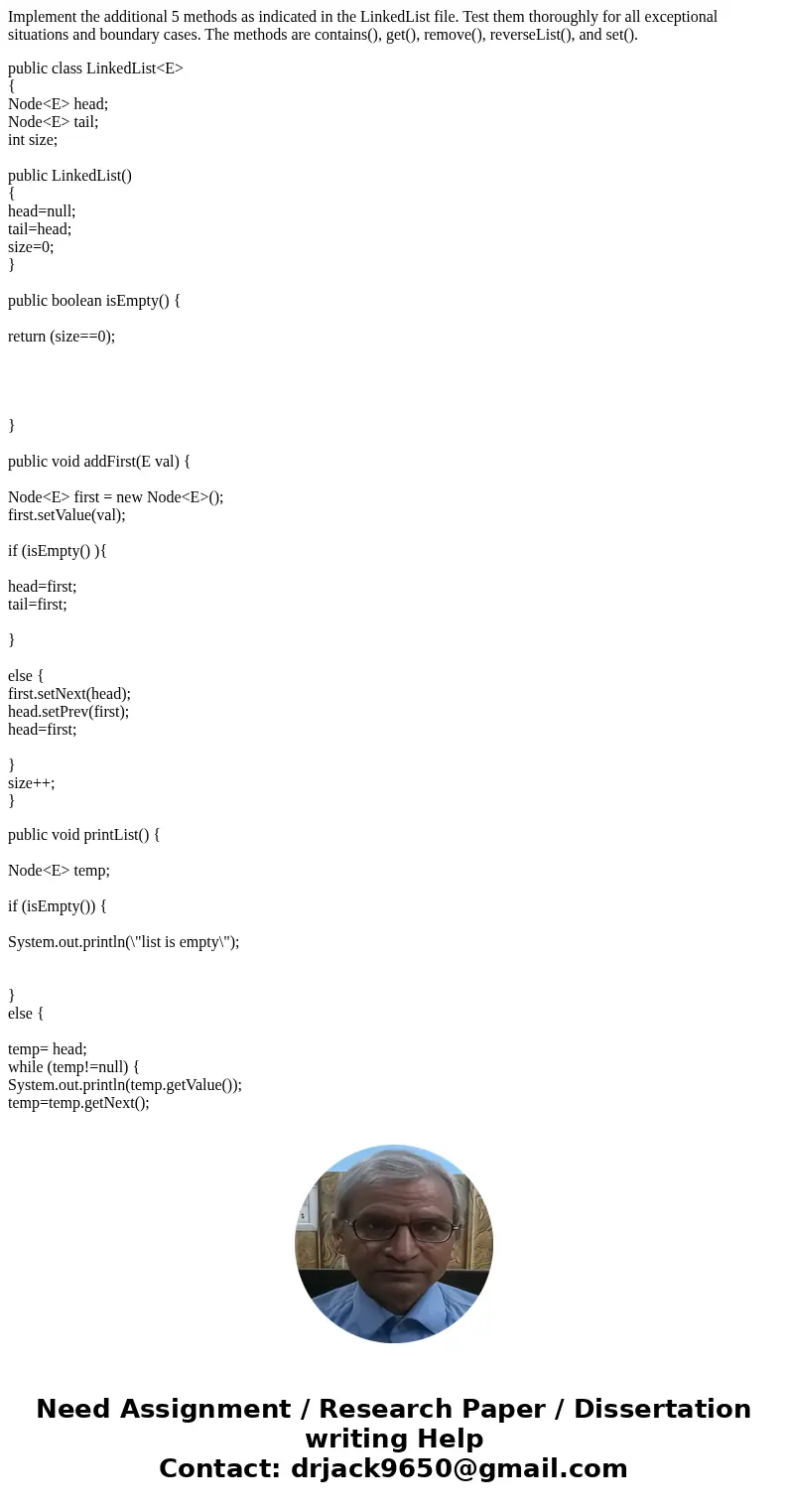
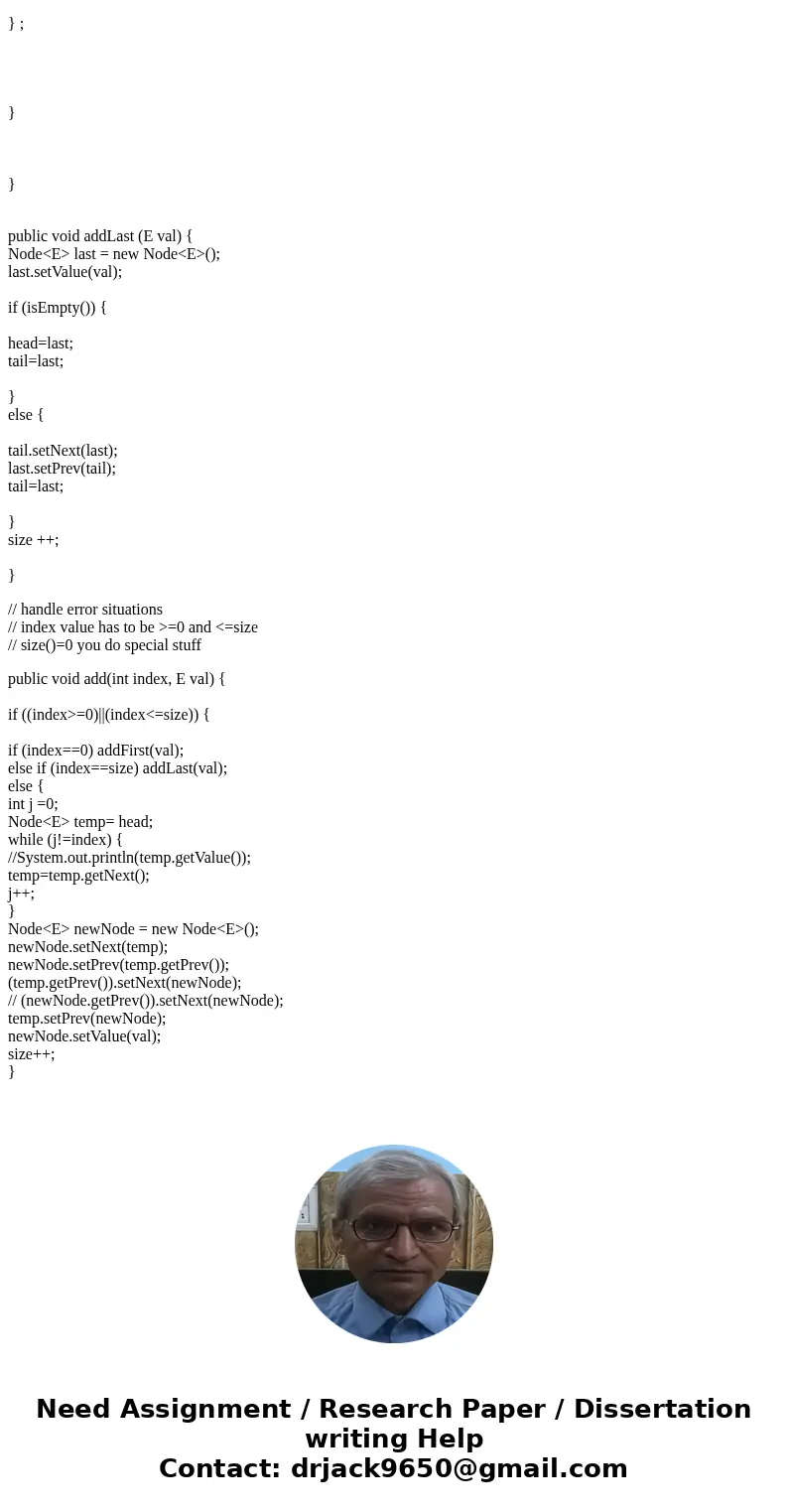
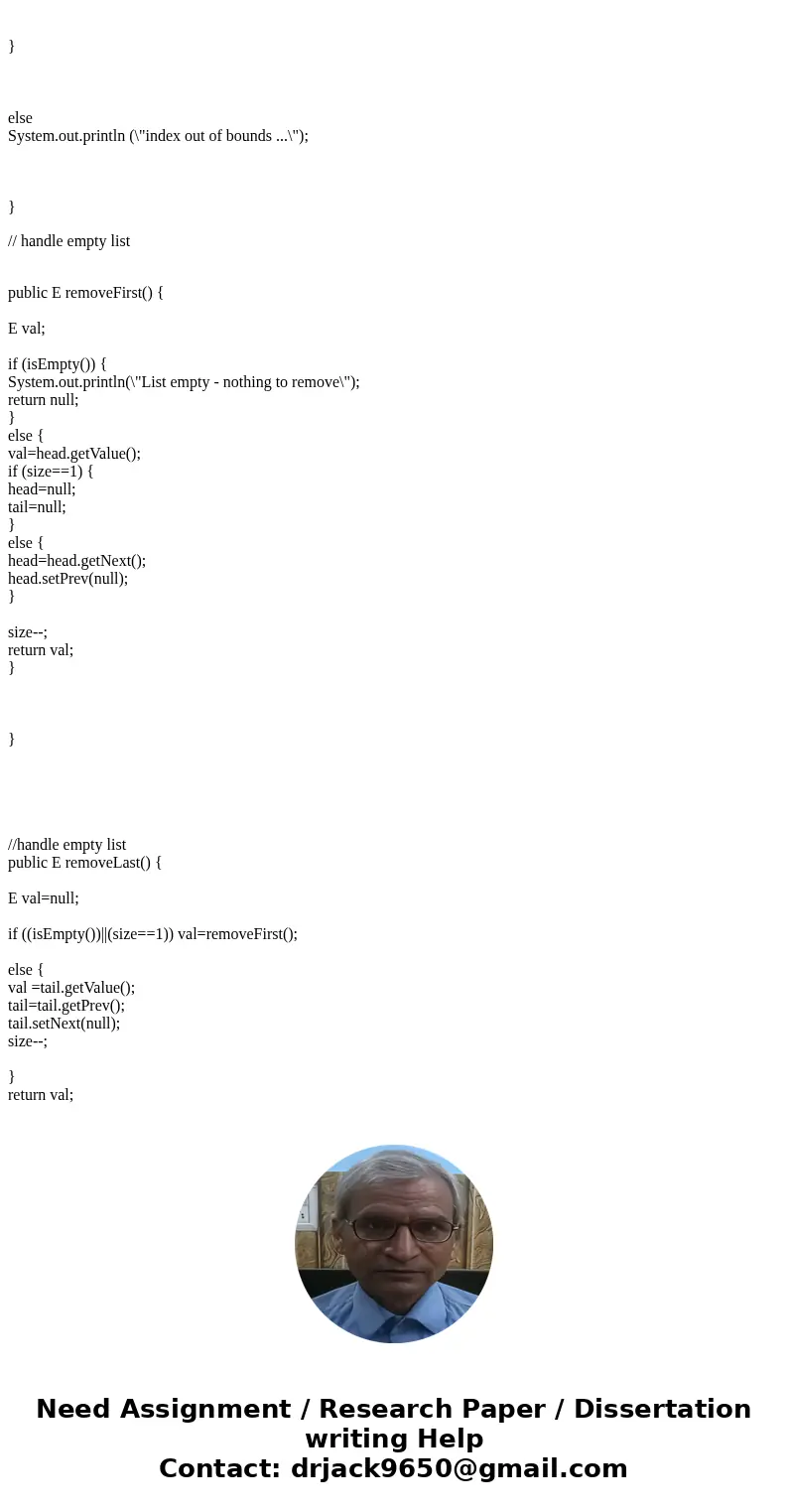
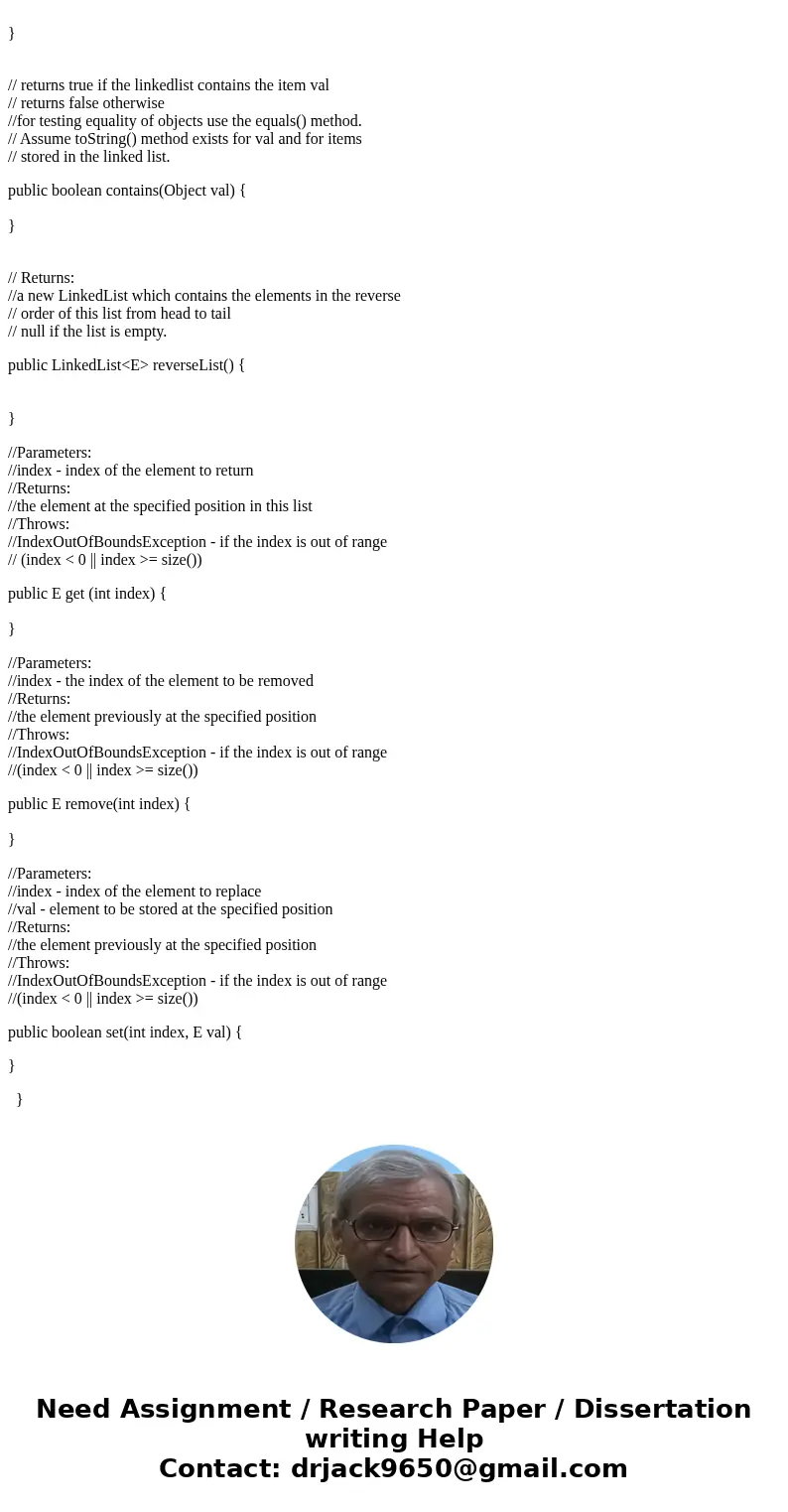
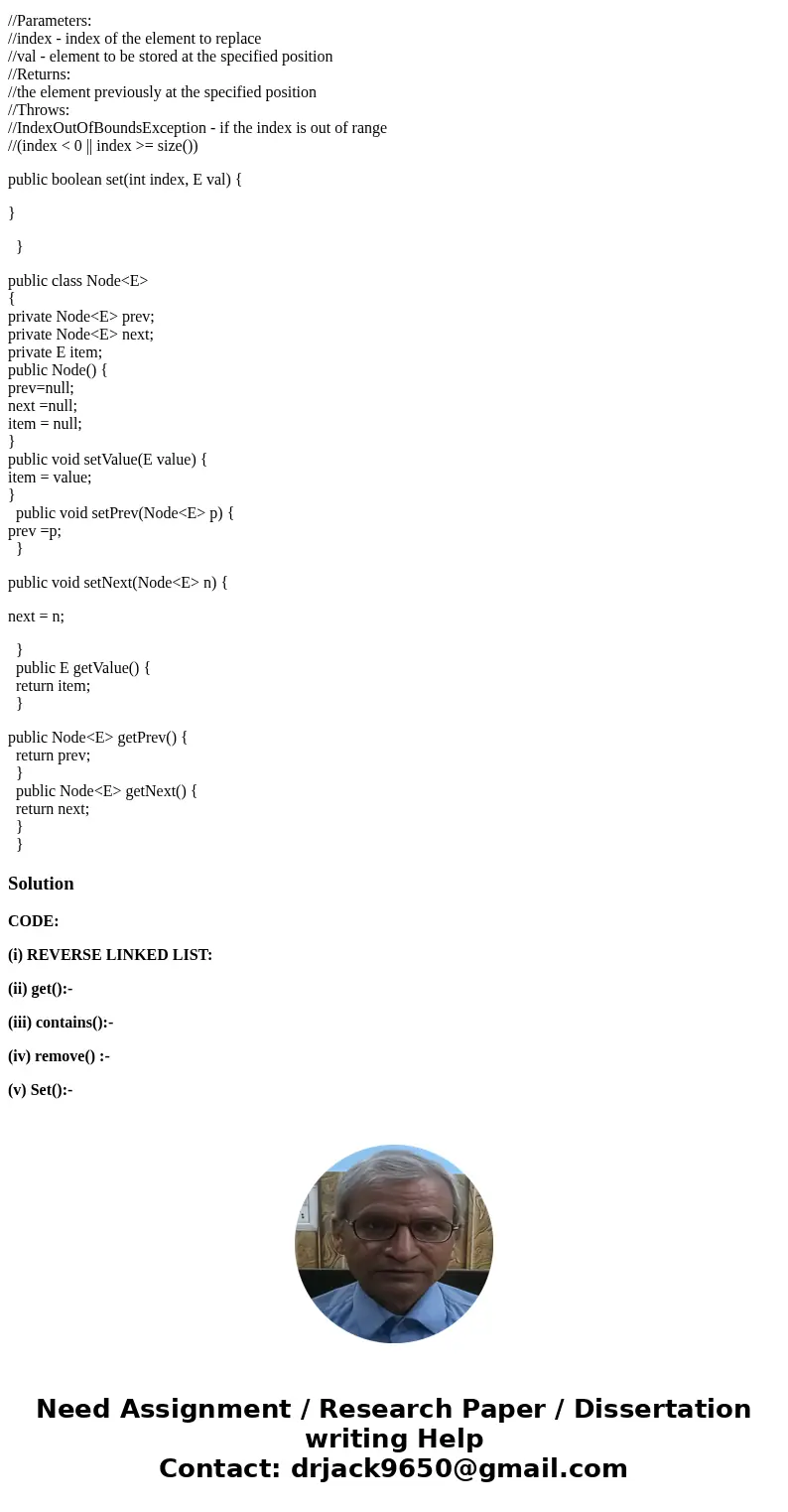
 Homework Sourse
Homework Sourse